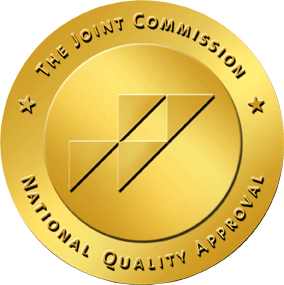Eating Disorders (EDs) are serious illnesses that have the highest death rates among all mental health conditions. Every 62 minutes, someone dies as a direct result of an eating disorder. Despite the prevalence of EDs, these diseases are still largely misunderstood. Sadly, the myths and misconceptions surrounding eating disorders can do more harm than good.
To ensure you can be an advocate for yourself or a loved one, it’s important to know the truth about eating disorders. Here are the top five myths and facts about eating disorders that everyone should know.
Myth 1: Eating disorders are just about food.
Fact: While eating disorders often involve calories and weight, they are serious illnesses that have biological and psychological factors.
At first glance, someone with an eating disorder might seem to have an obsession with food. But eating disorders usually involve binging, purging, or over-exercising behaviors that signal an attempt to control something.
Family and friends often mean well when they say their loved one should ‘eat more,’ ‘eat less,’ or ‘eat healthier.’ But ultimately, it’s not about the food. People with eating disorders require a combination of medical, psychiatric, and therapeutic treatment to reach a full recovery.
Myth 2: Eating disorders are a lifestyle choice.
Fact: Individuals with eating disorders do not choose this life. They have a mental health disorder.
Just as no one chooses to become an addict, no one chooses to have an eating disorder. The problems may start with self-destructive behaviors like restricting food and then progress into more serious problems. But no one actually sets out to have an eating disorder.
In reality, eating disorders are caused by genetic, environmental, and social factors. Some of the most common issues that people with eating disorders struggle with are low self-esteem, past trauma, substance use disorders, and mental illness.
Myth 3: Only women struggle with eating disorders.
Fact: It’s true that eating disorders affect more women than men, but they happen to boys and men, too.
In the United States alone, eating disorders affect 10 million men at some point in their lives and account for 10-15 percent of total cases. However, because of the cultural bias, men are much less likely to seek treatment for an eating disorder.
Studies suggest that mortality rates for males with eating disorders are higher than it is for females. Knowing this, it’s important to raise awareness of eating disorders in men as well as where to find treatment. Early intervention is crucial, though men have different needs and dynamics than women.
Myth 4: You can tell someone has an eating disorder by looking at them.
Fact: People can be of any weight and body type and have an eating disorder.
It’s another common misconception that only very thin people have an eating disorder. But people with EDs can come in any shape or size, and they can fluctuate in weight as well.
Anorexia tends to get a lot of media attention because it’s the most well-known eating disorder. Individuals with anorexia tend to be very thin, but there are other eating disorders to be aware of such as:
- Bulimia: People with bulimia eat unusually large amounts of food in a specific period of time. They then purge to compensate for the excess calories.
- Binge Eating Disorder: Similar to bulimia, people with binge eating disorder eat unusually large amounts of food in a short time. The difference is that they do not restrict calories or purge.
- Pica: This eating disorder involves eating things that are not considered food such as plastic, paper, dirt, soap, or hair.
- Rumination Disorder: This newly recognized ED refers to when a person regurgitates food they have previously chewed and swallowed, re-chews it, and either re-swallows it or spits it out.
- Restrictive Food Intake Disorder: This childhood diagnosis can linger into adulthood. It involves disrupted eating due to aversions of certain tastes, smells, textures, and temperatures.
Myth 5: It’s not possible to fully recover from an eating disorder.
Fact: Eating disorders are treatable with the right combination of medical, psychological, and therapeutic interventions.
Recovering from an eating disorder is challenging, but it is completely possible. It all starts with the right combination of treatments, which typically include psychotherapy, nutrition education, medical monitoring, and medication.
A critical part of treatment for EDs is understanding what caused the self-destructive behaviors in the first place. Many people with eating disorders are often engaging in these behaviors because of untreated mental illness or unresolved trauma. It’s also important to treat any other health problems caused by the eating disorder.
Start Your Eating Disorder Recovery Today
Eating disorders affect millions of people each year in the United States. If you or a loved one is currently struggling with an eating disorder, either on its own or in conjunction with another mental health condition, contact Breathe Life Healing Centers today. Our eating disorder treatment center in Los Angeles has experience treating bulimia, anorexia, binge eating disorder, and others.













